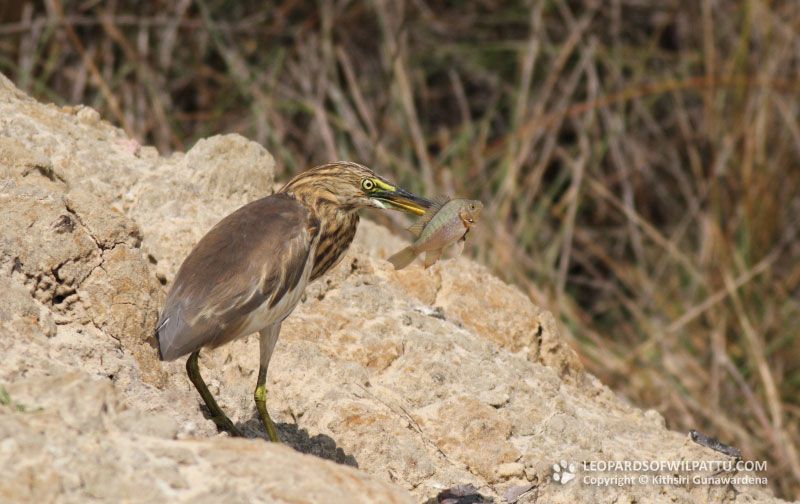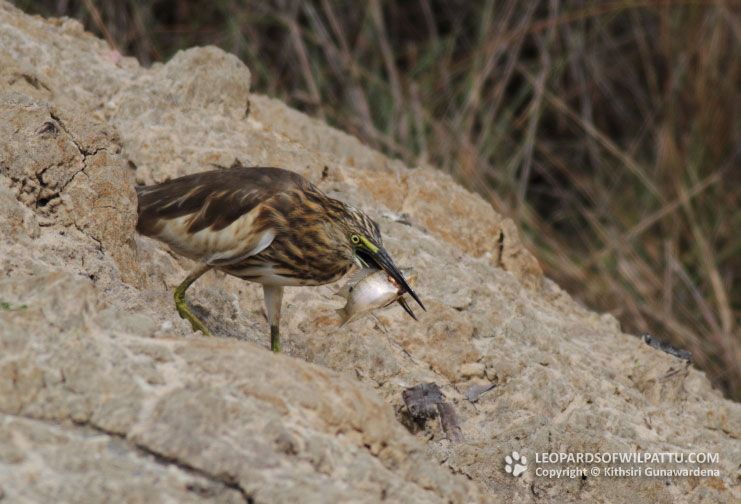
Birds ‹‹ Go Back
This species is found throughout the country in freshwater wetlands, coastal lagoons and marshes. Other than in Sri Lanka it is found from southern Iran towards the east to India, Burma and Bangladesh. The conservation status of the species under reference is regarded as Least Concerned (National Red List 2012). The Indian Pond Heronis a species protected under the Fauna and Flora Protection Ordinance as amended by Act No. 22 of 2009.
This is one of the most successful and commonest water birds in the country. It is nevertheless a very interesting bird to observe. I have built a small pond and a marsh in my garden in Colombo and keep common fish that breed profusely. As expected within one month of it being built one of these Herons started to visit and has now become a regular visitor. I derive immense pleasure by observing the smart strategies it adopts in hunting fish every morning while I read the newspapers and during weekends where I’m at home. I have built the pond in such a way where the fish are perfectly safe from ambush attacks of these herons and kingfishers so long as they stay at the center, deeper areas or among the reeds but becomes fare game if they reach the edges. One of the simplest but effective strategies it adopts is to stand perfectly still for almost 15-20 minutes and then pounce on any fish that wander within striking distance. Some times the bird would walk away from the pond, rest for a while, and then slowly walk with its body is as low as possible to the ground, towards the pond while taking cover behind the bricks at the edge. After each step it would slightly raise its head and look to see whether any fish has reached the edge and would crouch even lower and quicken its pace upon detecting one. Some of these walks end up in a successful ambush attack. As midday approaches it would stand close to the reeds, where sunlight falls directly, with its wings extended creating a patch of shade. Its head is tucked in with the beak pointing down. Small fish that venture out of the reeds towards its feet in search of the shade are easily picked up with a short jab of its beak. After each successful hunt the bird would walk away with its pray and would rerun after fluffing up and preening its feather for a while.
I have observed this interesting bird from the highest hills to the coast through out the country. It is believed that during the migrant season birds of this species migrate from India.
In Wilpattu this one of the commenest birds to be found at each water body during any time of the day.


